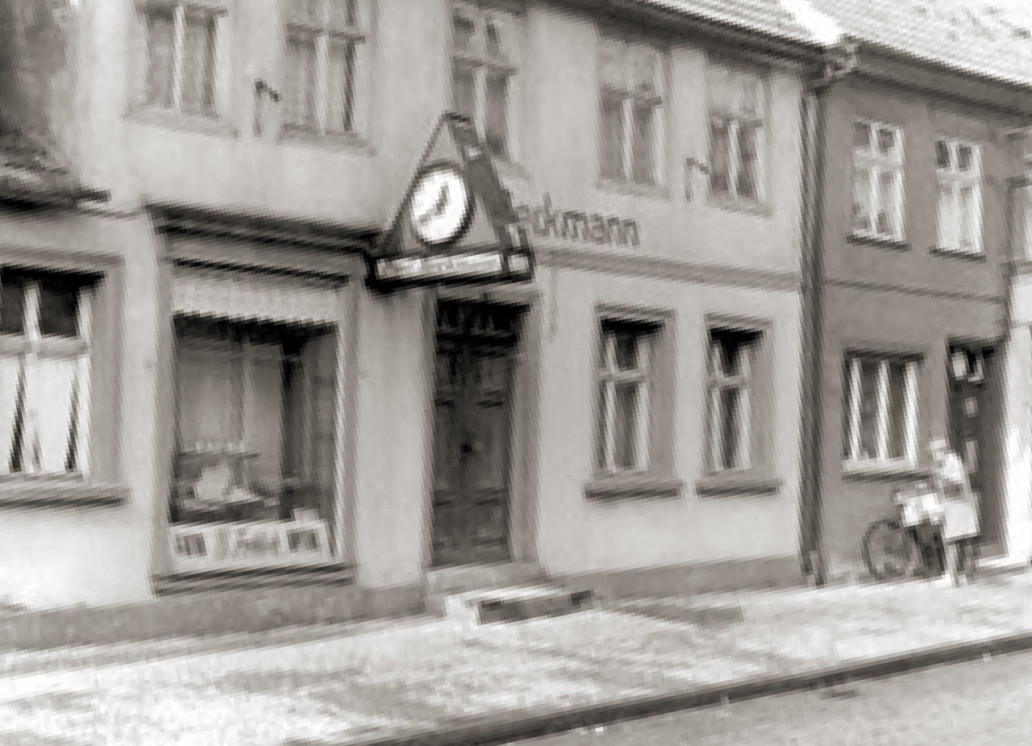History

It all started on a gloomy November evening in 1959. The city of Chemnitz should be named Karl-Marx-Stadt for another 30 years, when the watchmaker Dieter Dornblüth from the village of Salzwedel, Saxony-Anhalt, designed his first own movement in a furnished room. For three years he went to the Erzgebirge to expand his horological knowledge. He had been occupied by an almost lost case for some time: a sterling silver pocket watch with an extra large eccentric second display and a sturdy movement of high quality. During his long repair job, Dornblüth became so fond of this pocket watch that he was rather sad when its owner came to pick it up on that particular November day. That same evening, Dornblüth sat down and started designing a sturdy wristwatch movement in the image of the pocket watch he just had to give away, without giving too much consideration to its height and diameter. He had just finished his plans and the first wheels sat in place on the plate already, when the freshly appointed master watchmaker was called to Kalbe, Saxony-Anhalt, to take over the abandoned watchmaker business of Elsa and Paul Beckmann.

The dream of his own Dornblüth caliber vanished in one of the drawers of a workbench. Daily routine work and the success of the repair shop that soon grew to seven employees made it impossible for Dieter Dornblüth to follow up on the plan of creating an own movement.

Until October 1st, 1999, when Dieter Dornblüth celebrated his 60th birthday, Dieter’s son Dirk Dornblüth, already master watchmaker himself, presented a stainless steel wristwatch that he had created all by himself, with its movement based on the legendary Glashütte caliber 60.3. So great was the pleasure that the father revealed the story about his long forgotten plans of an own movement which he had kept to himself for the last 40 years. That same evening father and son started to sketch out the design of a possible base caliber on a paper napkin. This way, the father’s vision from 1959 was brought back to life again. With the Dornblüth calibers, father and son prove that own ideas in the art of watchmaking do not necessarily need sophisticated CNC technique, but that even today passionate and dedicated watchmakers can create own handcrafted precision watches using only traditional tools and machines. However, this requires a limitation in quantity: the monthly output of the Dornblüth manufacture will not exceed more than a few pieces per month. This is made up for by the outstanding features of the Dornblüth movements:

- characteristic 18,000 semi-oscillations per hour
- Glucydur screw balance with Nivarox-1-spring
- swan-neck fine adjustment on the hand-engraved balance cock
- solid three-quarter plate
- screwed gold chatons
- retracting ratchetmechanism, with large flat polished large spring and click
- double sunburst finish on the crown wheels
- yellow gold hand-graving of manufactory name and number from the registry book

When both watchmakers planned the design of the sturdy caliber, their eyes were caught by an empty space opposite the small second near numeral „9”. What could be done to balance out this one-sided dial and give the face of the watch a somewhat more harmonic look? While leafing through old auction catalogs, the young master got the idea to integrate a power reserve display near numeral „3”. Moreover the watchmakers wanted to avoid the distorted indication of the winding state, which was prevailing in the common power reserve indicators, due to their planetary differential with too many wheels. But how could this indication be integrated into the almost finished movement all by keeping its external dimensions? The Father Dornblüth found the solution for this issue when, waiting for his car to be repaired, he looked at the small engine models in a showcase of the local garage. Since his reflections were especially stimulated by the model of a differential gear from a car’s rear axle, he asked the owner of the garage if he could borrow it for some days. Back home, he and his son puzzled over the question how this bevel gear differential could serve as a model for the construction of the power reserve indicator. The result was a three-wheel mechanism no higher than 2.98 mm, which could then be used for the power reserve indicator, also called »Up-and-Down« display. The meshing of only a few wheels leads to a very reduced mechanical friction and thus allows an extremely precise indication of the mainspring’s actual winding state. The Caliber 99.2 was born.